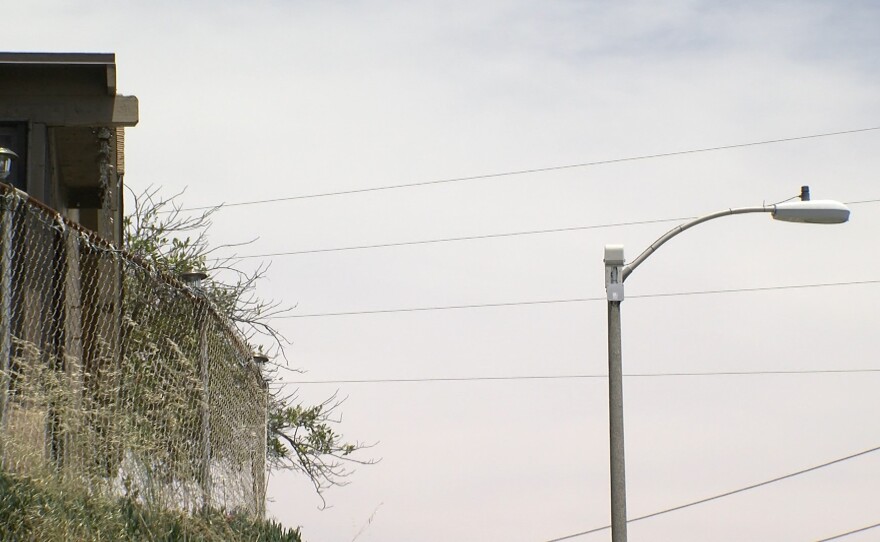In late 2016, San Diego joined about 100 cities nationwide that use a gunshot detection system called “ShotSpotter.”
Before the ShotSpotter system was launched, the only way police would know to respond to shots fired was to either be in the area or respond to people calling 911.
“When the community doesn’t call us and let us know that there’s a situation going on, either through 911 or the non-emergency line, we won’t know about it,' San Diego Police Lt. Shawn Takeuchi said.
Of course, police want people to call 911 if they hear gunshots. But with ShotSpotter — they’re notified within a minute of a gun being used. The system uses sensors mounted on light poles. It triangulates the sound, giving police a precise location of where the gunfire happened.
Takeuchi said that allows police to get on scene quickly enough to preserve evidence, perhaps even to capture a shooter.
City data was used to determine where to deploy ShotSpotter.
That data showed most gunshot calls came from four neighborhoods in southeast San Diego: Valencia Park, Lincoln Park, O’Farrell and Skyline/Paradise Hills. But those neighborhoods are not necessarily supportive of ShotSpotter.
“That does not prevent a crime from happening and it does not help you to solve a crime,” said longtime community activist Bishop Cornelius Bowser.
Bowser said the ShotSpotter system was installed with no community input. That did not, and does not, sit well with people in southeast San Diego.
“That’s not the way you build trust. That’s not the way that you work with the community to keep the community safe,” Bowser said.
RELATED: San Diego Police Test System To Detect Gunshots, Explosions
But Lt. Takeuchi said SDPD is very focused on community policing, the building of trust with the people they police.
“Without community trust, it’s very, very difficult for a department to operate, and we recognize that. We understand that and we value that,” Takeuchi said.
But Bowser said there’s another problem with ShotSpotter. There is skepticism in the community, some fearing a "big brother" type scenario where the ShotSpotter devices could actually be listening to conversations.

Takeuchi said the system does not capture conversations.
“It’s looking for specific soundwaves and when those soundwaves trigger the system, that’s when the recording occurs,” he said.
The city is in the middle of a four-year, $1 million contract with ShotSpotter. Bowser said it’s a waste of money.
“That million dollars could be going to something that’s way more effective and this does not help build community trust and accountability,” he said.
Takeuchi disagrees.
“If gunfire were to erupt, and we get to a location where no 911 calls were received and there’s an individual that’s been shot, and we’re able to render first aid—we’re able to save that person’s life—I think the system has paid for itself,” Takeuchi said.
In the area where ShotSpotter is now deployed, there was an average of four murders a year in the years leading up to its installation.
Over the last two-and-a-half years, there haven’t been any. Whether that has anything to do with ShotSpotter, is anyone’s guess.








